New Hampshire Bridges
Like the human body, the inside of a centuries-old covered bridge contains its framework and the outside shows its age (or maintenance budget). Under the bridge is a good place to find its heart and imagine what it has lived through – above the ever-changing flow of a river.
Click on the first photo in each group and scroll to see the square photos at full size.
To start at the beginning of this series, visit Fall for New England 2021.
The Life of a Bridge
The Cold River may look tame and babbling in the pictures below, but imagine how difficult and dangerous it would have been to cross during spring floods – when it was raging! There was definitely a need to safely get farm wagons across rivers to transport goods to market. Rather than standard specifications like we have today, early bridges were sized to “a load of hay high and a load of hay wide.”
Adding a roof to a wooden bridge offered it protection from the elements, thereby extending its lifespan. Iron bridges became the norm in the mid-1800s making roofs unnecessary – and with height, width and load restrictions also lifted, the eventual phase-out of covered bridges had begun. Currently there are 54 historic wooden covered bridges still standing in the state. We saw ten – so clearly we have more exploration to do in New Hampshire!
Durgin Bridge
Although the sign on the bridge boasts 1828, the sign-painter must be referring to the first bridge that was constructed at this location. The current bridge is the fourth, built when the other three washed away in 1844 and 1865, and again in 1869 when the Cold River became so violent that it twisted and snapped the 2-inch diameter iron bolts used to secure the bridge to huge boulders. Jacob Berry of North Conway did a fine job constructing this new bridge, since it has only been repaired and strengthened two times since.
For the Love of New Hampshire
As we checked out the Durgin Bridge, we met a friendly woman who was walking her dog. She seemed excited to be talking to someone other than Rover, and eagerly shared her love of New Hampshire and a life-altering choice that she has been contemplating.
Her and her husband have differing opinions on where they should winter during retirement. He prefers warmth and recently headed south, but she loves New Hampshire and has yet to follow. With some political friction in the mix, I was left wondering how that story will end.
The Durgin Bridge was a link in the underground railroad from Sandwich to North Conway and is listed on the National Register of Historic Places.
NOTE: We saw the Durgin Bridge during our visit to Castle in the Clouds in Moultonborough.
Albany Bridge
The first bridge on this site was built in 1857 and was destroyed by floods a year later. The U.S. Forest Service and the town of Albany have tackled many projects over the years to keep this bridge in great condition.
With one major restoration in 1958, the crew tried to replicate the original design as much as possible – with natural wood beams replacing the rotting ones. The wooden pegs used to put it all back together were crafted by the grandson of one of the original builders, from 40-60 year old ash trees. The last major renovation in the early 1980s replaced the wooden floor timbers with steel.
There is a large parking lot, restrooms and several interesting signs on both ends of the bridge with great information about life way back in the day – when a trip into town took three hours instead of today’s several minutes. The bridge is closed during the winter months, except to walkers.
It’s a Beauty!
The Albany Bridge is also known as White Mountain National Forest Bridge. With a bench to rest a bit next to the crystal clear waters of the Swift River, this is one of the most photographed covered bridges in New Hampshire.
I got a great photo of Jim leaning out of one of the openings in the bridge – an “oh ya!” moment that another couple copied as we were leaving. The Albany Bridge is eligible for listing on the National Register of Historic Places.
Lower Falls Scenic Area
We can’t have an entire post about four covered bridges without celebrating the river that runs beneath three of them! The Swift River is almost 26 miles long and its entire length flows along the scenic Kancamagus Highway (NH Rte 112). It originates in Livermore, NH, flowing through the town of Albany (under the Albany and Swift River Bridges), and into the Saco (Saco River Bridge) in Conway.
Hot Spot to Cool Off
Lower Falls Scenic Area is a very popular destination on this beautiful highway. Although none of the “falls” are large, the Swift River cascades over smooth granite rocks into large pools – like a natural water slide. The pools are plentiful and once the current of the Swift River calms down and the water temperature rises in early summer, this beautiful place can bring large crowds to play in the mountain water.
There is plenty of parking with facilities and picnic tables with grills, and this area was recently updated for easy access for folks with disabilities. If the water is high and/or rushing through this area, you are advised not to swim as it can be extremely dangerous. Today the water level was just perfect and several folks braved the cooler weather to take a dip, but we did not.
Swift River Bridge
“The first bridge on this site was built by John Douglass in 1850. It gave much needed access to the north using West Side Road and served local commerce well until the spring of 1869. At that time, heavy rains swelled the river and the raging waters lifted the bridge from its foundation, turned it around, and sent it rapidly downstream into the Saco River Covered Bridge knocking it off its moorings. Both damaged structures broke up and came to rest two miles downstream.
In a striking demonstration of Yankee thrift, much of the lumber salvaged from these two bridges was used in the building of the new Swift River Covered Bridge constructed by Jacob Berry and his son Jacob Jr. The current bridge was bypassed when a new concrete and steel bridge was built nearby in 1974. The Swift River Bridge is eligible for listing on the National Register of Historic Places.” ~ READ MORE
Bring your Lunch!
Before the Swift River Bridge was replaced with the new concrete and steel bridge downriver, it was only a single lane bridge – which now works out perfectly as a picnic area! Too bad we didn’t know about this earlier!
We always enjoy walking through the bridges to see both sides. In this case, the less-seen side was in need of a paint job, but the house up the road and its wonderful iron gate made up for the bridge’s tattered appearance.
Saco River Bridge
The only way across the Saco River at this location was over a crudely-framed log bridge until its demise in 1850. The 1850 bridge stood until the Swift River bridge crashed into it in 1869 (see inset above). The Saco River Bridge was rebuilt but destroyed again by a tannery fire in 1890. The current bridge was built in 1890, but fully restored in the late 1980s.
It really is a beautiful bridge with sidewalks on both sides. In the photo of the rivers below, you can see where the Swift and Saco Rivers converge and then the Saco continues its journey east to the Atlantic Ocean.
 Relax and Refresh
Relax and Refresh
Our last stop of the day was at Tuckerman’s Brewing Company for a craft beer. The tasting room was closed today and because of Covid our options were to sit outside or sit outside. Under normal circumstances we would have preferred to sit outside, but the clouds had gotten slightly more threatening while we made our choices from the extensive beer menu.
Luckily a huge tent with Adirondack chairs and a large stage was one of our options outside, so at least we would remain dry while we wet our whistles. On a future visit, we’ll check the music schedule before we come.
It was awesome to relax, refresh and reflect on today’s beautiful sites here in New Hampshire. We almost made it “home” before the skies opened up and drenched us on our mad dash from car to condo. Good thing I bought a raincoat at an earlier trip to Walmart this morning. Jim was not so lucky.
Next up: All Things New Hampshire
Happy trails,
Barb

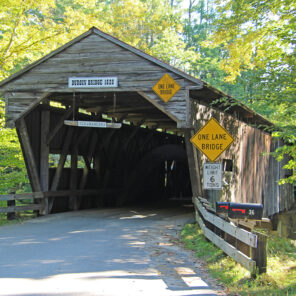
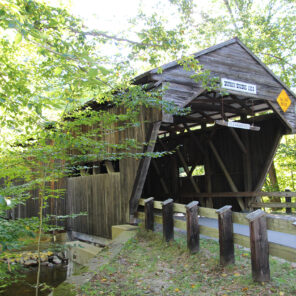
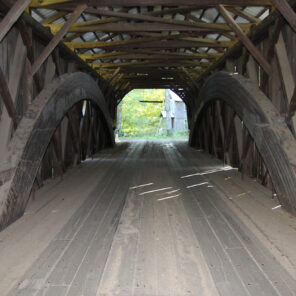

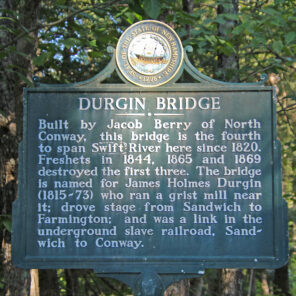
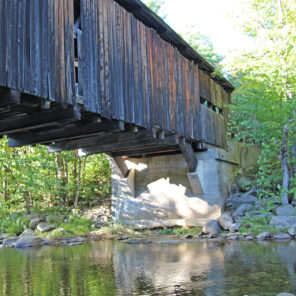
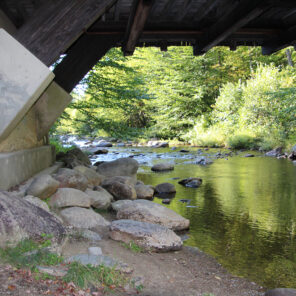
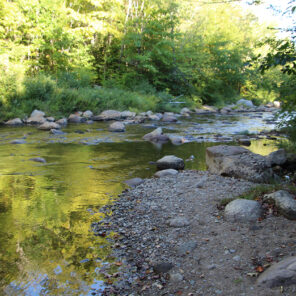

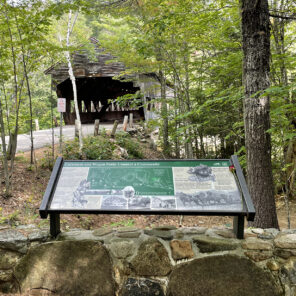

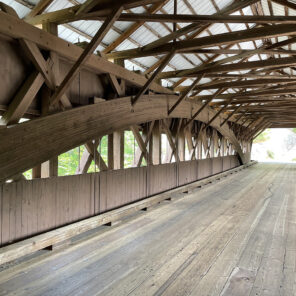
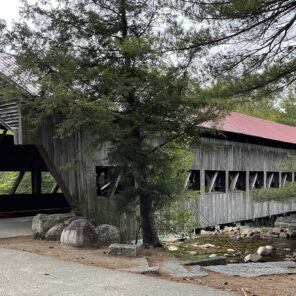
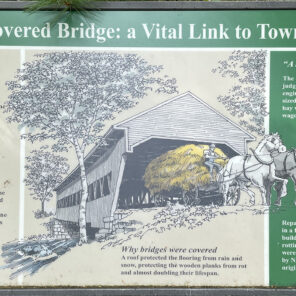
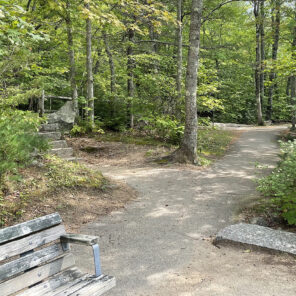

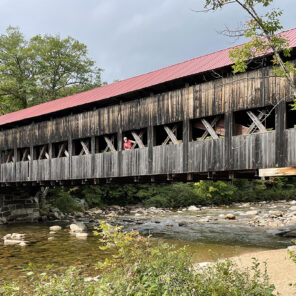


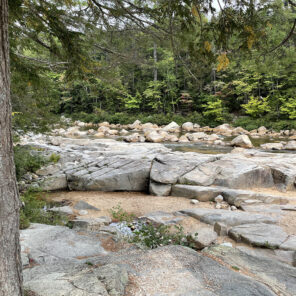
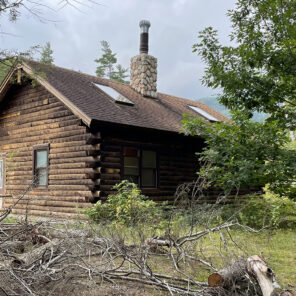
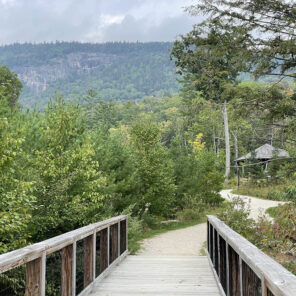

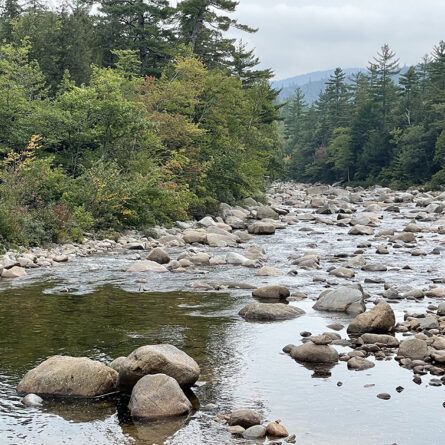
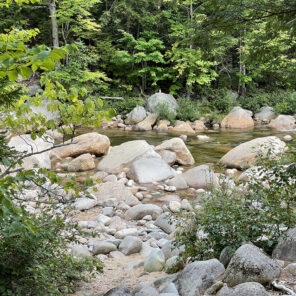

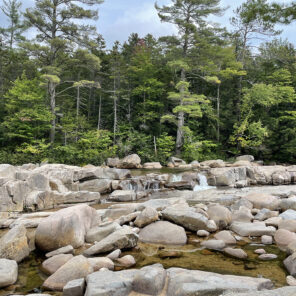
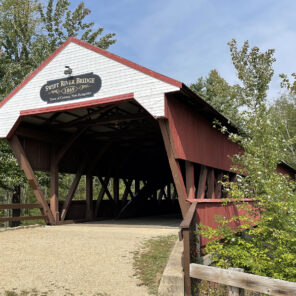
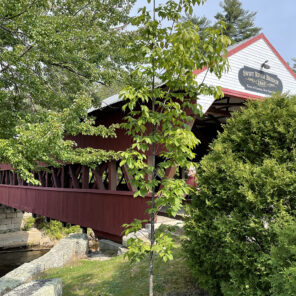
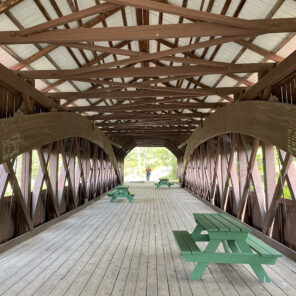
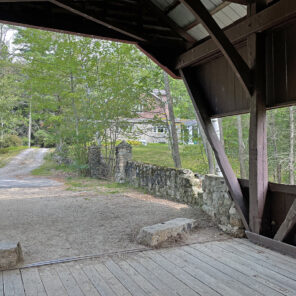
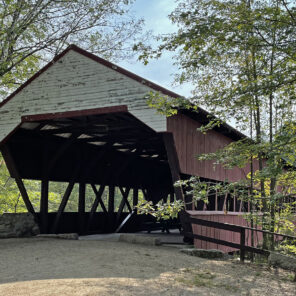
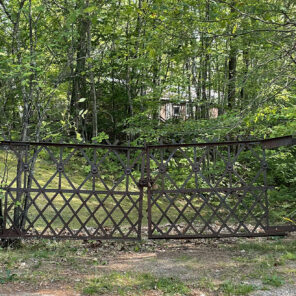

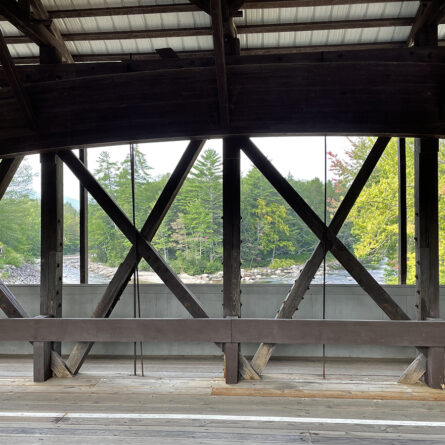
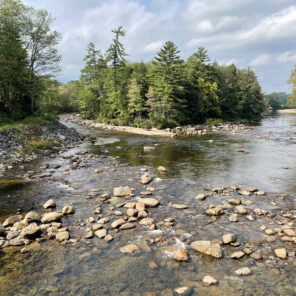
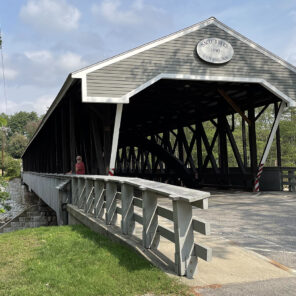
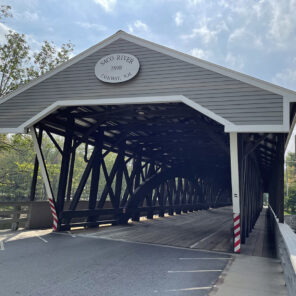






Comments are closed here.